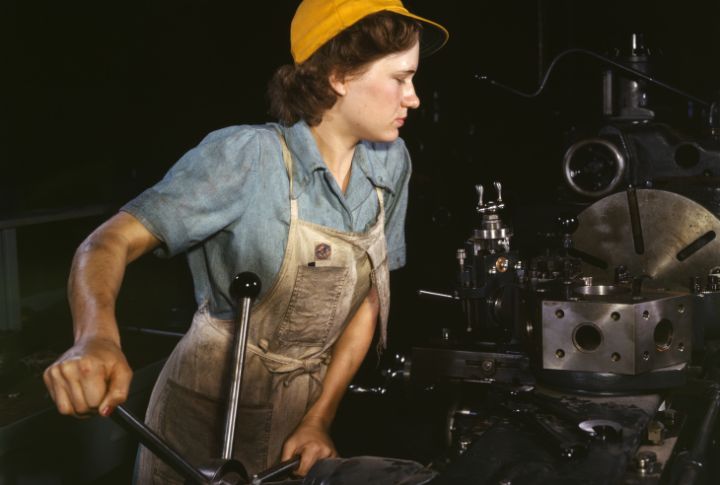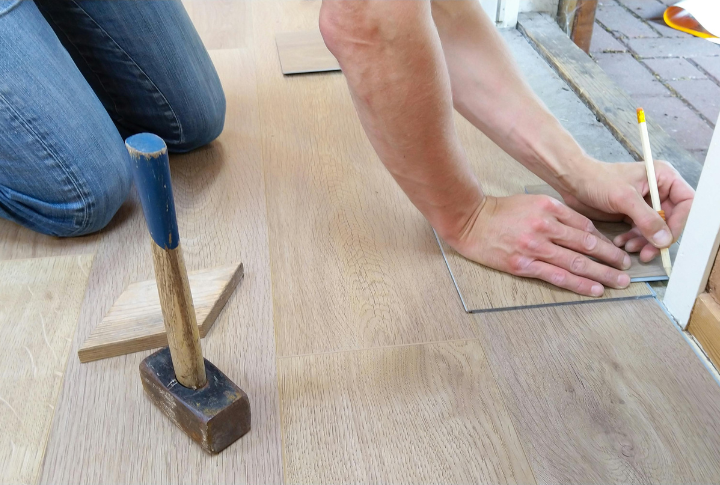
The Great Depression pushed people to their limits, but it also sparked some of the most practical ways to save money. Want to know how to make your money last longer? Let’s explore the tricks from the past that can help you make the most of your budget today.
Cook From Scratch & Use Every Part Of The Food

Cooking from scratch was a standard during the Great Depression when families avoided expensive processed foods. People made everything from bread to soups, using every scrap. This hack not only cuts food costs but also fosters creativity in the kitchen. Now, you’ll find that making meals with bulk ingredients saves serious cash—without compromising taste!
Grow Your Own Food & Preserve Food

Home gardens flourished in the face of food scarcity, and preservation ruled. Families ensured their harvest lasted through canning, pickling, fermenting, or drying. Growing your own food today might seem daunting, but it guarantees fresh produce without the hefty grocery bill.
Repurpose Leftovers & Make Do With Less

Leftover steak could become the next day’s beef stew. Back in the day, instead of tossing out stale bread, for example, people turned it into breadcrumbs or casseroles. You can also do that today. By creating something new from leftovers, you cut waste and maximize your resources, time, and money.
Mend & Repair Instead Of Replacing

During the Great Depression, repairing was the name of the game. Today? Tossing and buying is the norm. But you know what? You do not have to conform. Instead, mend and repair clothing, shoes, and furniture; don’t throw them out if you can fix them. This mindset can significantly extend the life of your possessions.
Make Your Own Cleaning Supplies

Families in the Great Depression era turned to simple ingredients like water, vinegar, baking soda, and lemon. These not only cleaned but also protected the environment and saved money. Today, this old-school method can significantly cut down your household budget. The bonus? Homemade cleaners are often non-toxic and smell much better than chemical-laden products.
Buy In Bulk (When It Makes Sense)

Buying in bulk was a clever strategy that we should also adopt. If you always purchase staples like flour, rice, salt, sauces, and sugar every few weeks, why not buy in bulk at a lower per-unit price? Stocking up on essentials on sale can lead to significant long-term savings. But here’s the catch: don’t buy what you won’t use.
Barter & Trade Skills

Bartering was common during the Great Depression—people exchanged services instead of money. Need a haircut or your yard fixed? Trade your sewing skills. This practice still exists today, often on a local or community level, and can save you big money. So, start by offering your skills in exchange for something you need.
Walk Or Bike Instead Of Driving

Transportation costs were a serious concern during the Great Depression, and walking or biking became a practical alternative to driving. With gas prices soaring today, choosing to walk or bike instead of driving can save you a small fortune. And let’s not forget the bonus of physical exercise!
Make Coffee & Meals At Home

Eating out was a luxury during tough times, so home-cooked meals became the norm. Brewing your own coffee instead of visiting cafes or buying pre-made meals saves considerable cash today as well. The average person spends $5 or more on a cup of coffee—multiply that by five days a week, and you’re looking at hundreds of dollars a year!
Use Cloth Instead Of Paper

The Great Depression forced families to ditch disposable paper products and opt for cloth everything—napkins, towels, and rags. This saved a few coins, so why continue to buy paper towels when you have perfectly good fabric lying around? This eco-friendly, money-saving habit reduces waste and teaches a valuable lesson in resourcefulness.
Turn Off Lights & Unplug Devices

During the Great Depression, families likely conserved energy, such as turning off lights, to manage scarce resources and lower utility costs where electricity was available. While unplugging modern electronics wasn’t a practice then—given the limited appliances of the time—applying this habit today can reduce staggering electricity bills.
Make Gifts Instead Of Buying

Purchasing costly store-bought gifts may sound like a great idea, but do you know what’s better? Making gifts from scratch. Families during the Depression made presents like knitting scarves, homemaking jams, designing arts and crafts, and hand-sewing items into cherished tokens of love. DIY gifts are often far more appreciated than something bought off a shelf.
Shop Secondhand

Thrift shops were a goldmine during the Great Depression, offering everything from clothes to furniture to utensils at a fraction of the price. Today, secondhand shopping is more popular than ever, with many high-quality items available for a fraction of the retail price. Furniture, clothes, gifts, home decor, even electronics—there’s almost nothing you can’t find secondhand.
Use The Library

During the Great Depression, libraries offered free books, newspapers, and entertainment. Now, libraries still provide vast resources affordably. The only difference is that you get modernized things in digital formats. Oh, you could also find a few power tools (if they stock them). Libraries also host workshops and events. Sometimes for free.
Cut Your Own Hair

Professional haircuts during the Great Depression were often considered a luxury due to limited funds. While not widely documented, it’s plausible that many families trimmed each other’s hair to save money, a practice consistent with the era’s emphasis on frugality. This can still be a cost-saving trick today. Even without experience, basic trimming techniques are accessible through online tutorials.
Pay In Cash & Avoid Debt

During the Great Depression, there were limited credit sources, meaning people paid everything in cash. The benefit? They avoided accumulating unnecessary debt. Unfortunately, today, using credit cards or loans has become the norm. This often leads to high interest charges, creating a cycle of debt. Switching to cash payments helps you stay within your means.
Reduce Waste & Reuse Everything

Wasting anything—food, materials, or resources—was a no-no during the Depression. You can apply this hack to nearly every area of your life. For example, old clothes can become cleaning rags, and used containers can store just about anything. Stop throwing away perfectly good items and start reusing them.
DIY Repairs & Home Maintenance

Rather than hiring professionals for every repair, people surviving the Great Depression took on home maintenance themselves. This practice empowered people to become more self-sufficient; some even became skilled professionals, earning from their skills. You can also emulate this. Thankfully, there is a goldmine of online resources, and DIY repairs are becoming attainable.
Focus On Needs Over Wants

Buying a car might seem ideal, but securing a home sounds necessary. Don’t you think so? This analogy could be used for everything. Ask yourself, “Do I need this or want it?” If it is something you can get after a few months, that’s a want. If you need it now, that’s a need. But please, be realistic!
Simplify Your Lifestyle

Simple does not mean boring; let’s just make that clear first. Simplicity, as it was done during the Great Depression, proved this. Families embraced minimalism, making do with fewer possessions and modest homes. One car in one household is a great example. When you simplify your lifestyle, it cuts out all the clutter and extra expenditures.
